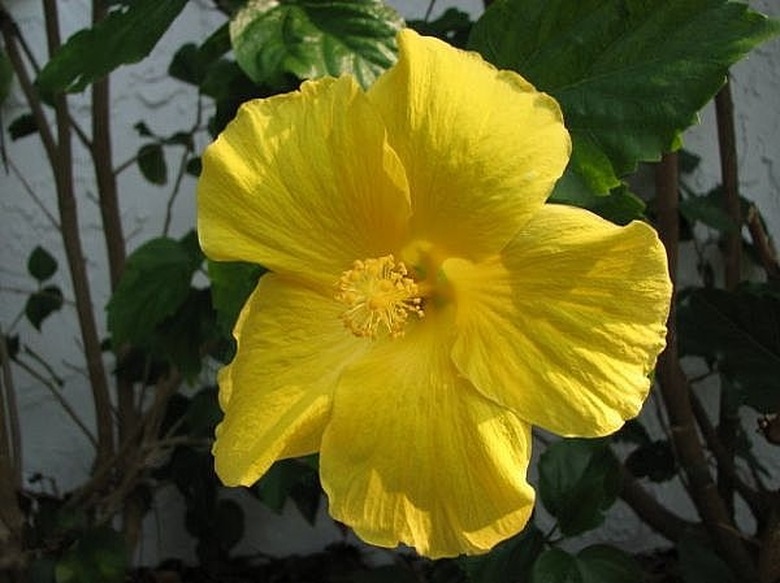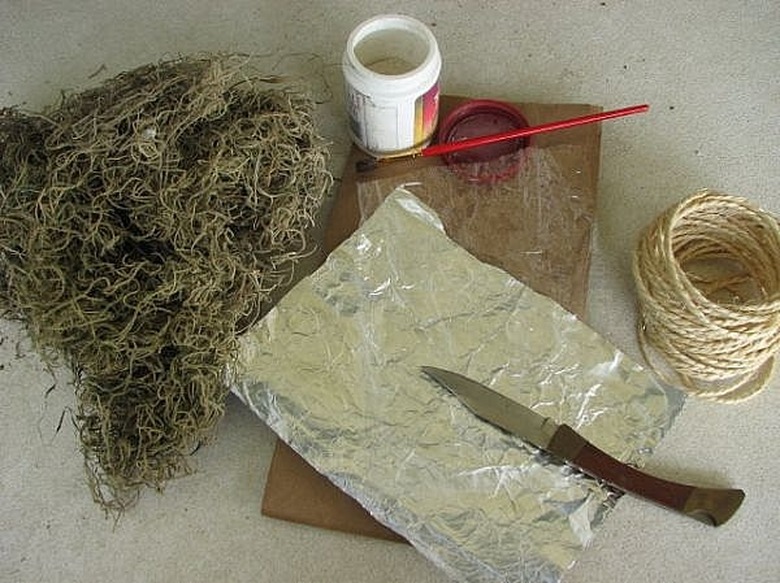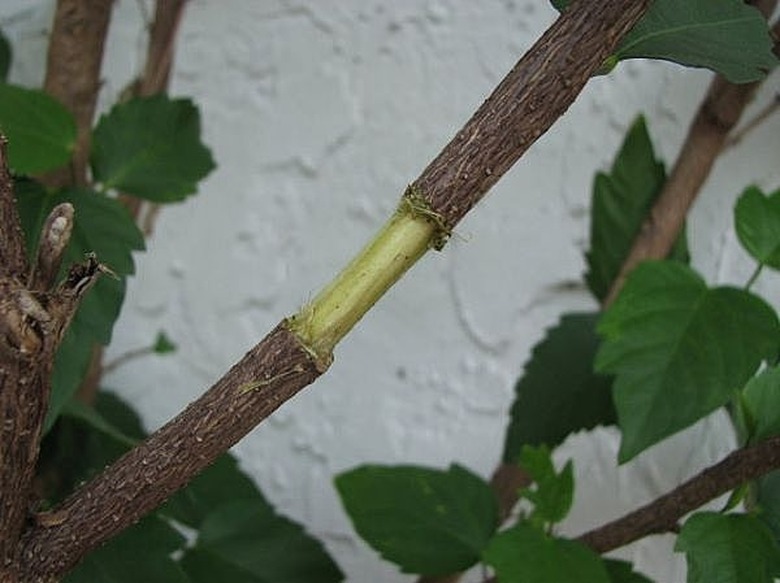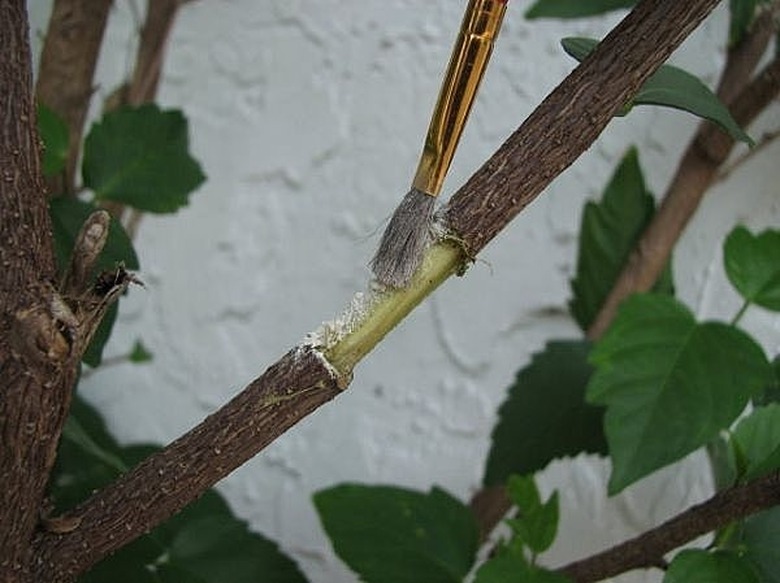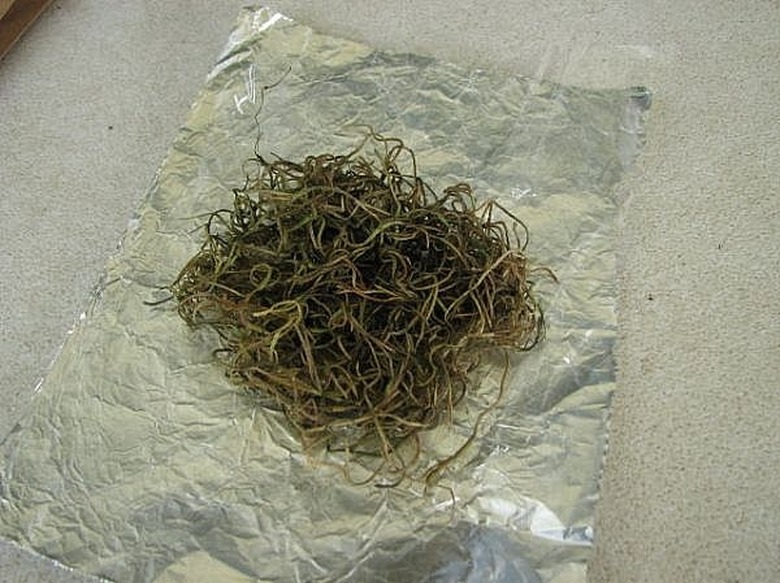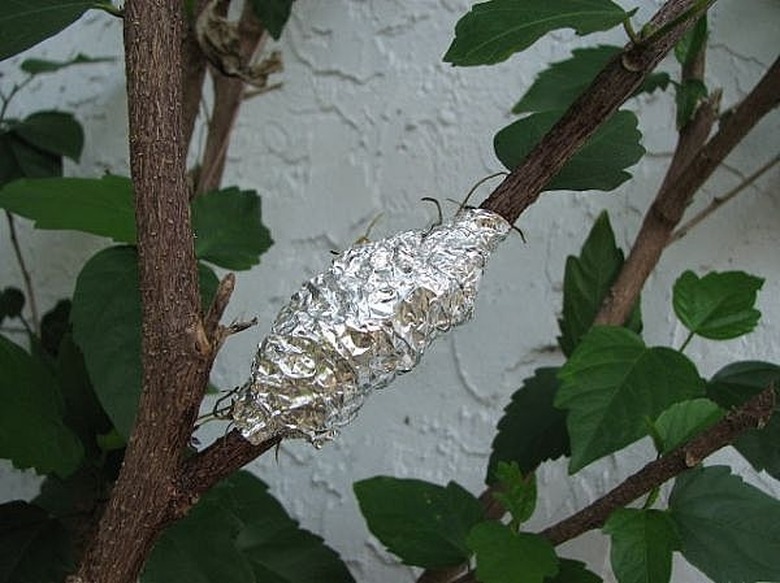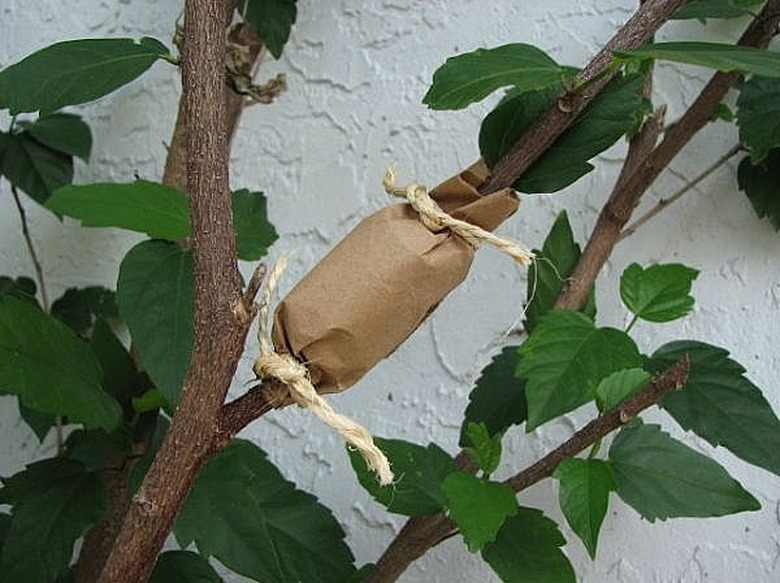How To Propagate Hibiscus By Air Layering
Things Needed
- A mature hibiscus plant
- Plastic sheet
- Aluminum foil
- Sphagnum moss
- Brown paper
- Twine, floral wire, tape or rubber band
- Sharp knife
- Rooting medium
- Soft paintbrush
How to Propagate Hibiscus by Air Layering. Hibiscus is a popular tropical plant because aside from its very attractive and colorful flowers, it is one of the easiest plants to propagate. The various ways to multiply hibiscus are through seeds, cuttings, grafting and air layering, also called marcotting or aerial rooting. Air layering is forcing a chosen branch to grow roots and become a whole new plant. Here's how.
Step 1
Prepare the things you'll need: a plastic sheet, aluminum foil and brown paper (all about 4-by-4 inches), rooting medium and a soft paintbrush, a handful of sphagnum moss (soaked in water), tying material like twine, cord, floral wire, tape or rubber band and a sharp knife.
Step 2
Choose a mature and healthy branch on the mother hibiscus plant. Through air layering, this branch will eventually be rooted and cut off to become the new plant. Pick a branch that is about the width of a pencil.
- How to Propagate Hibiscus by Air Layering.
- Choose a mature and healthy branch on the mother hibiscus plant.
Step 3
Using the sharp knife, make two cuts around the bark of the branch, 1 inch apart. Scrape off the bark and cambium layer (green layer) between the two cuts to expose the white core of the branch.
Step 4
Use the paintbrush to apply a thin coat of rooting medium to the bared section of the branch. The rooting medium provides the nutrients necessary to induce root growth.
Step 5
Lay the plastic sheet on the aluminum foil, and then lay the moist sphagnum moss on the plastic sheet.
Step 6
Wrap the sphagnum moss, plastic sheet and aluminum foil around the bared section of the branch and squeeze tightly to secure the bundle. The plastic and aluminum sheets will seal the moisture in and provide the required humidity for root growth.
- Using the sharp knife, make two cuts around the bark of the branch, 1 inch apart.
- Use the paintbrush to apply a thin coat of rooting medium to the bared section of the branch.
Step 7
Wrap the bundle in brown paper and secure the ends with twine, floral wire, tape or rubber band. The brown paper will deter insects and birds from damaging the bundle.
Step 8
Check the rooting after four weeks. If the air layering is successful and there is sufficient rooting, cut the branch below the root ball and transplant the new plant into its own pot or location in the garden.
Step 9
Give the new hibiscus plant the same care needed by transplants: semi-shade, sufficient watering and moisture and regular fertilizer after 4 to 6 weeks. Trim some of the leaves to compensate for the breakaway from the mother plant.
Tip
Soak the sphagnum moss for at least half an hour for optimum moisture. Consider securing the sphagnum moss to minimize moisture loss by tying off the ends of the plastic sheet onto the branch before wrapping with aluminum foil.
Warning
When transplanting the rooted branch, do not try to remove the sphagnum moss because most of the small roots are already entwined in the moss.
